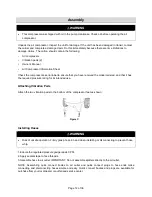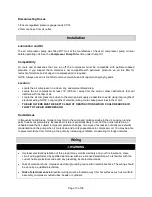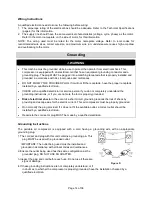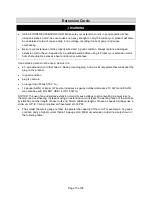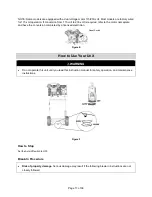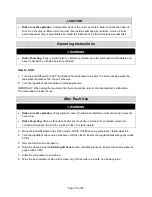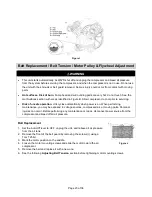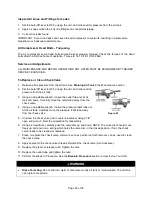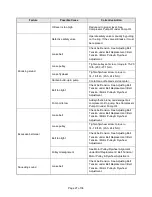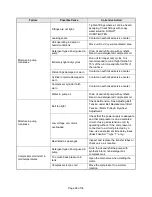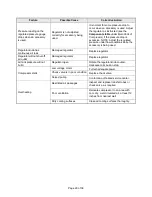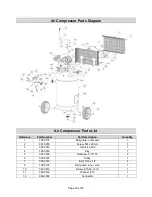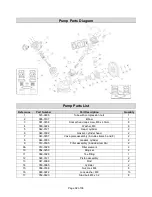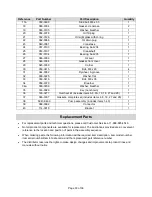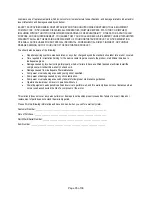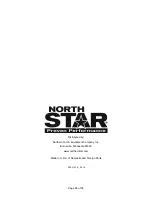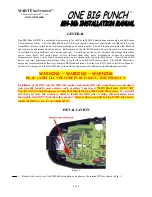
Page 26 of 36
Troubleshooting
Failure
Possible Cause
Corrective Action
Air leaks
Fittings are not tight
Tighten fittings where air can be heard
escaping. Check fittings with soapy
water solution. DO NOT
OVERTIGHTEN.
Air leaks in air tank or at air
tank welds
Defective air tank
Air tank must be replaced. Do not repair
the leak.
Warning: Risk of bursting. Do not drill
into, weld, or otherwise modify air tank
or it will weaken. The air tank can
rupture or explode.
Air leaks between head
and valve plate
Leaking seals
Contact an authorized service center.
Air leaks from safety valve
Defective safety valve
Operate safety valve manually by pulling
on ring. If valve still leaks, it must be
replaced.
Compressor is not
supplying enough air to
operate accessories
Fittings are not secure and tight
Tighten fittings where air can be heard
escaping. Check fittings with soapy
water solution. DO NOT
OVERTIGHTEN.
Prolonged excessive use of air
Decrease amount of air usage.
Compressor is not large
enough for accessory
Check the accessory air requirement. If
it is higher than the SCFM or pressure
supplied by your air compressor, a larger
compressor is needed to operate
accessory.
Hole in air hose
Check and replace air hose, if required.
Restricted air intake filter
Clean or replace air intake filter.
Loose belt
Check the belt tension. See Adjusting
Belt Tension under Belt Replacement /
Belt Tension / Motor Pulley & Flywheel
Adjustment.
Restricted air intake
Restricted air intake filter
Clean or replace air intake filter.
Oil in discharge air
Restricted air intake filter
Clean or replace air intake filter.
Piston rings are damaged or
worn
Contact an authorized service center.

